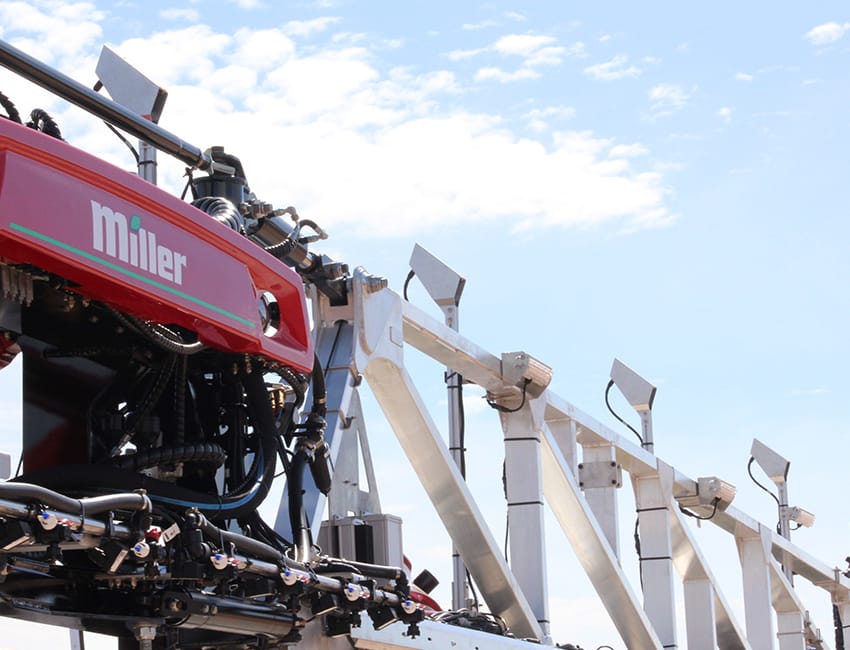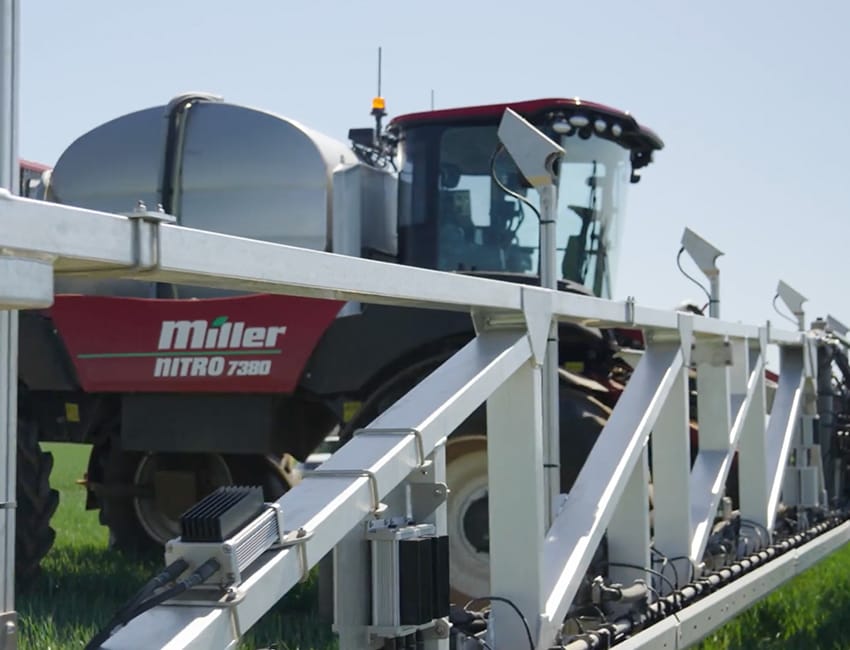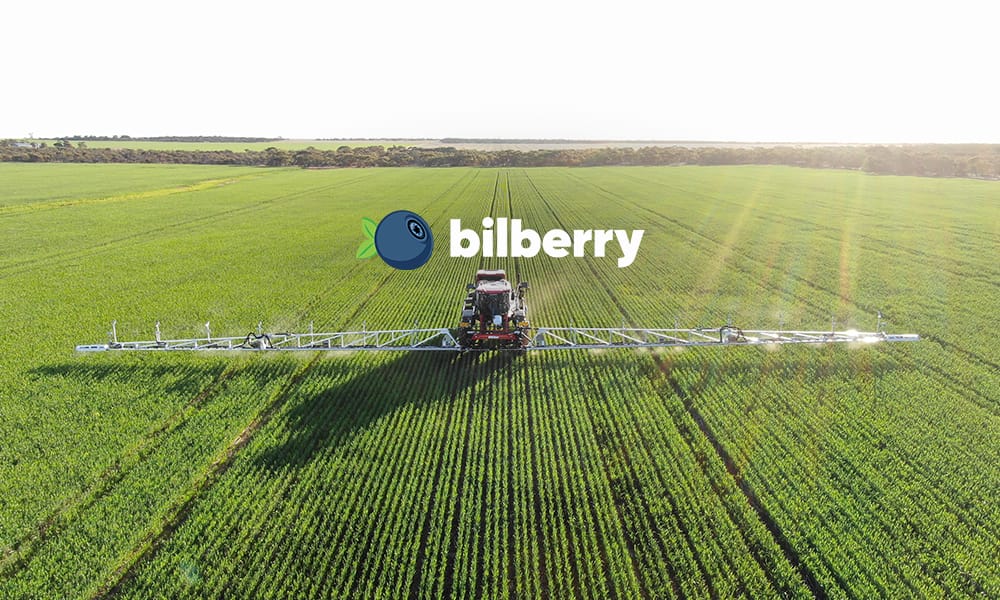
How Bilberry works on a Miller Nitro
1. The camera analyses the field and provides continuous pictures to the embedded computer.
2. The embedded computers uses a combination of artificial intelligence and agriculture knowledge to provide fast and accurate weed detection analysis in real-time. It generates weed identifications and cell activations on the spray map.
3. In the Miller Nitro cab display, the operator gets full control of the system and can select the weeds to target, the crops to protect and configure the system’s accuracy. The console allows for individual nozzle control for more precision.
Bilberry cameras can be fitted to selected Miller Nitro booms using an air-actuated folding mechanism.
Features

Experience a new level of spot spraying with Miller Nitro and Bilberry
Experience live crop data, green-on-green weed detection, and future planning with weed mapping.
An embedded computer, linked to the cameras, uses proprietary software to communicate with the sprayer to analyse images of the field in real-time, recognising weed species present within crops.
This full integration also allows users to easily change from spot to blanket spraying.
Specifications
Frequently Asked Questions
The Bilberry Intelligent Spot Spraying System is a cutting-edge technology that enables precise and targeted spraying of weeds in agricultural fields. It combines advanced camera imaging, artificial intelligence algorithms, and precise spray application to optimise herbicide usage and minimise environmental impact.
This leads to improved coverage and reduced drift at higher speeds.
IntelliSpray II™ is available exclusively on Miller Nitro sprayers.
The camera must first see the weed to be able to identify it.
A two-part spray strategy is strongly recommended for the best spray coverage. This strategy allows the system to detect any weeds it may have missed due to weeds being too small or overshadowing crop/stubble.
At this stage, Bilberry is a factory-fit option only for Miller Nitro and we are not able to retro-fit.
Ask your local Miller dealer to include a Bilberry system when you enquire about your new sprayer.
Bilberry works in conjunction with Miller Nitro and IntelliSpray II™, allowing operators to easily switch between blanket spraying and spot spraying without removing the system, all from the comfort of the cab.
A maximum of 25km p/hour is achievable, however for optimal data processing and full efficacy of chemical application, a speed of 20km p/hour is recommended.
For green-on-brown applications, night spraying is possible with the addition of a night light kit. For green-on-green applications, daylight hours are recommended for best results as night is not suitable.
Yes, it does. The higher the stubble load, the more chance of it over-shadowing weeds, making it difficult for the cameras to see, identify and spray.
No, there are no ongoing charges.
The system is purchased upfront, including licences for green-on-green and green-on-brown detection. This one-time payment covers all future algorithm updates, with no additional usage fees.

